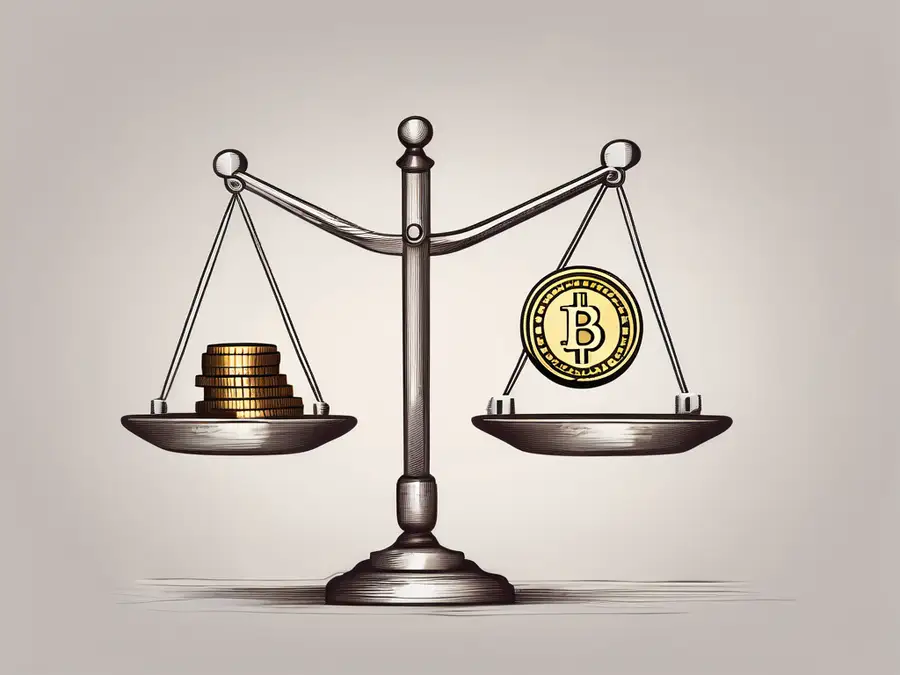What Is Spot Trading: A Comprehensive Guide

Spot trading is a fundamental concept in the world of financial markets. Whether you're new to investing or an experienced trader, understanding spot trading is essential for navigating the complex landscape of buying and selling assets. In this comprehensive guide, I will break down the basics of spot trading, explain how it works, delve into different types of spot trading, discuss the advantages and disadvantages, compare it to futures trading, and help you choose the right trading method for your needs.
Understanding the Basics of Spot Trading
Definition and Overview of Spot Trading
Spot trading, also known as cash trading, refers to the purchase or sale of financial instruments or commodities for immediate delivery and settlement. Unlike other trading methods, spot trading involves the exchange of assets at their current market price, as opposed to a future date or predetermined price.
When engaging in spot trading, traders and investors are able to take advantage of the current market conditions and make transactions without waiting for a specific future date. This immediacy allows for greater flexibility and responsiveness to market fluctuations.
Spot trading is typically conducted in over-the-counter (OTC) markets, which are decentralized and operate through a network of dealers and brokers. This decentralized nature of spot trading provides market participants with a wide range of options and opportunities for trading various assets.
Some common examples of spot trading include spot forex trading, where currencies are bought and sold, and spot commodity trading, which involves the trading of physical commodities like gold, oil, or agricultural products. These markets attract a diverse range of participants, including individual traders, financial institutions, and corporations.
The Importance of Spot Trading in Financial Markets
Spot trading plays a vital role in providing liquidity to financial markets. It facilitates immediate access to assets and allows market participants to respond swiftly to changing market conditions or take advantage of short-term investment opportunities. The ability to buy or sell assets on the spot enables investors, traders, and businesses to manage risk, hedge their positions, and capitalize on price movements.
Moreover, spot trading sets the benchmark for other trading methods, such as futures trading. The spot price — the current market price at which an asset is traded — influences futures contracts, which are derivative products based on the expected price of the underlying asset at a future date. Understanding the dynamics of spot trading is essential for comprehending the broader dynamics of financial markets.
Spot trading also fosters market efficiency by ensuring that prices accurately reflect supply and demand dynamics. The continuous buying and selling of assets in spot markets helps to establish fair market prices, as traders and investors react to new information and adjust their positions accordingly.
Furthermore, spot trading provides opportunities for arbitrage, a strategy that involves taking advantage of price discrepancies between different markets. Traders can exploit these price differences by simultaneously buying an asset at a lower price in one market and selling it at a higher price in another, thereby profiting from the price discrepancy.
Spot trading is not only limited to financial assets but also extends to physical commodities. For example, in the spot commodity market, traders can engage in the physical delivery of commodities like oil or agricultural products. This physical settlement aspect of spot trading ensures that the market remains connected to the real economy and allows for the efficient allocation of physical resources.
In conclusion, spot trading is a fundamental aspect of financial markets, enabling immediate transactions at current market prices. It provides liquidity, sets benchmarks for other trading methods, fosters market efficiency, and offers opportunities for arbitrage. Understanding spot trading is crucial for investors, traders, and businesses seeking to navigate the dynamic landscape of financial markets.
The Mechanics of Spot Trading
How Spot Trading Works
In spot trading, the process is relatively straightforward. Buyers and sellers agree on a price for the asset, and the transaction is immediately executed. The settlement, or delivery of the asset and payment, takes place on the spot or within a short period of time after the trade.
Traditionally, spot trading relies on physical delivery, where the actual asset is transferred from the seller to the buyer. However, in many modern spot trading markets, settlement occurs electronically, with cash or book entries replacing physical delivery.
Let's dive deeper into the mechanics of spot trading to gain a better understanding of how it operates.
Key Elements of a Spot Trade
A spot trade involves several key elements that are crucial to understanding its mechanics:
-
- Trading Platform: Spot trading is conducted through various platforms, ranging from online brokerage accounts to dedicated trading systems. These platforms provide access to real-time prices, charts, and order execution.
When engaging in spot trading, traders have the flexibility to choose the trading platform that suits their needs and preferences. Online brokerage accounts offer convenience and accessibility, allowing traders to execute trades from the comfort of their homes. On the other hand, dedicated trading systems provide advanced features and tools for professional traders who require more sophisticated trading capabilities.
-
- Bid and Ask Prices: Every spot trade involves a bid price, representing the highest price a buyer is willing to pay, and an ask price, representing the lowest price a seller is willing to accept. The difference between these prices is known as the “spread.”
The bid and ask prices play a crucial role in determining the execution price of a spot trade. When a buyer places a market order, they will be matched with the best available ask price, ensuring immediate execution. Similarly, when a seller places a market order, they will be matched with the best available bid price.
-
- Order Types: Traders can place different types of orders, including market orders, limit orders, and stop orders, to buy or sell assets at specific prices or under certain conditions.
Market orders are executed at the prevailing market price, while limit orders allow traders to specify the maximum price they are willing to pay as a buyer or the minimum price they are willing to accept as a seller. Stop orders, on the other hand, are triggered when the market reaches a specified price, allowing traders to enter or exit positions automatically.
-
- Volume and Liquidity: The volume of trading activity and the availability of buyers and sellers in the market determine the liquidity of the spot trading market. Higher liquidity enhances the ease of executing trades at desired prices.
When engaging in spot trading, traders often consider the liquidity of the market to ensure they can enter or exit positions without significant price slippage. Higher trading volumes and a larger number of participants contribute to increased liquidity, reducing the risk of executing trades at unfavorable prices.
By understanding the key elements of spot trading, traders can navigate the market with greater confidence and make informed decisions based on their trading strategies and goals.
Different Types of Spot Trading
Spot Forex Trading
Spot forex trading involves the buying and selling of currencies in the foreign exchange market. Traders speculate on the price movements of currency pairs, such as EUR/USD or GBP/JPY, and aim to profit from fluctuations in exchange rates. The spot forex market operates 24 hours a day, enabling traders to capitalize on global economic events and news.
When engaging in spot forex trading, traders have access to a wide range of currency pairs, allowing them to diversify their portfolios and take advantage of various market conditions. For example, if a trader believes that the US dollar will strengthen against the euro, they can sell the EUR/USD currency pair to profit from the anticipated decline in value.
Furthermore, spot forex trading offers high liquidity, meaning that traders can easily enter and exit positions without significant price slippage. This liquidity is a result of the vast number of participants in the forex market, including banks, financial institutions, corporations, and individual traders.
Additionally, spot forex trading provides traders with the opportunity to use leverage, which allows them to control larger positions with a smaller amount of capital. While leverage can amplify profits, it also increases the risk of losses, making risk management crucial in forex trading.
Spot Commodity Trading
Spot commodity trading involves the direct buying or selling of physical commodities, such as gold, oil, natural gas, or agricultural products. Traders can take advantage of price movements caused by supply and demand imbalances, geopolitical events, or weather conditions. Spot commodity trading allows for immediate delivery and ownership of the underlying asset.
One of the key advantages of spot commodity trading is the ability to hedge against price fluctuations. For example, if a company relies heavily on a particular commodity for its operations, it can enter into a spot contract to secure the current price and protect itself from potential future price increases.
Furthermore, spot commodity trading provides an opportunity for physical traders to profit from arbitrage. Arbitrage refers to the practice of buying a commodity at a lower price in one market and selling it at a higher price in another market, taking advantage of price discrepancies. This requires efficient logistics and transportation capabilities to ensure timely delivery and maximize profits.
Spot commodity trading also plays a significant role in global trade. It allows producers and consumers to manage their exposure to price volatility, ensuring a stable supply of essential commodities. Moreover, spot commodity trading contributes to price discovery, as market participants actively trade and provide liquidity, leading to more accurate pricing.
Advantages and Disadvantages of Spot Trading
Benefits of Spot Trading
Spot trading offers several advantages for market participants:
- Immediate Access: Spot trading allows for instant purchase or sale of assets, providing immediate access to markets without the need for waiting or locking funds in long-term contracts.
- Flexibility: Spot trading offers flexibility in terms of trading volume, as buyers and sellers can choose the precise amount they wish to trade, subject to market liquidity.
- Transparency: Spot trading occurs at publicly available prices, ensuring transparency and fairness in price discovery.
- Diversification Opportunities: Spot trading enables traders to diversify their portfolios by accessing various asset classes, including currencies, commodities, and more.
Potential Risks and Drawbacks
While spot trading provides numerous advantages, it also carries certain risks:
- Market Volatility: Spot trading exposes traders to the potential for significant price fluctuations, which can result in substantial gains or losses.
- Limited Control: As spot trades are executed immediately, traders have limited control over the precise execution price, especially in fast-moving markets.
- Counterparty Risk: Spot trading involves potential counterparty risk, such as the risk of default or non-delivery by the seller.
- Regulatory Constraints: Depending on the jurisdiction, spot trading may be subject to specific regulations and restrictions, which traders need to be aware of.
Spot Trading vs. Futures Trading
Fundamental Differences and Similarities
Spot trading and futures trading are two distinct trading methods with their own characteristics:
Spot trading involves immediate delivery and settlement, while futures trading involves contracts for future delivery at a predetermined price.
Spot trading provides more flexibility, as it allows traders to buy or sell assets in smaller quantities or even single units. In contrast, futures contracts often have standard contract sizes or lot sizes.
Both spot trading and futures trading allow traders to speculate on price movements and profit from them. However, futures trading requires traders to anticipate price movements correctly within a specific time frame.
Choosing the Right Trading Method for You
Deciding between spot trading and futures trading depends on your trading objectives, risk appetite, and trading style. If you prefer immediate access to markets and more flexibility in trade sizes, spot trading may be suitable. On the other hand, if you aim to hedge positions, trade larger volumes, or take advantage of leverage, futures trading might be more appropriate. It's crucial to evaluate your goals and preferences before committing to a specific trading method.
FAQ
What is spot trading?
Spot trading refers to the purchase or sale of financial instruments or commodities for immediate delivery and settlement at the current market price.
How does spot trading work?
In spot trading, buyers and sellers agree on a price, and the transaction is executed immediately. Settlement, or the delivery of the asset and payment, occurs on the spot or shortly after.
What are the advantages of spot trading?
Spot trading offers immediate access to markets, flexibility in trading volumes, transparency in price discovery, and diversification opportunities across various asset classes.
What are the risks of spot trading?
Spot trading involves market volatility, limited control over execution price, potential counterparty risk, and regulatory constraints that traders should be aware of.
How does spot trading differ from futures trading?
Spot trading involves immediate delivery and settlement, whereas futures trading involves contracts for future delivery at a predetermined price. Spot trading provides more flexibility, while futures trading offers hedging opportunities, larger volumes, and leverage.
How should I choose between spot trading and futures trading?
Choosing between spot and futures trading depends on your trading objectives, risk tolerance, and trading style. Consider factors such as immediate access, flexibility, hedging needs, trade volumes, and leverage before deciding.
Conclusion
Spot trading is a crucial trading method in financial markets, enabling investors and traders to access markets instantly and capitalize on short-term opportunities. By understanding the mechanics of spot trading, exploring different types, and weighing the advantages and disadvantages, you can make informed decisions and navigate the intricacies of the trading world.
Remember, successful spot trading requires expertise, research, and continuous learning. It's essential to develop a robust trading strategy, manage risk effectively, and stay updated with market trends. Now that you have a comprehensive understanding of spot trading, it's time to dive deeper and embark on your trading journey with confidence!
Ready to take your spot trading to the next level with a platform that's as innovative as your trading strategy? Discover Morpher.com, where the fusion of blockchain technology and financial markets creates a trading experience like no other. With zero fees, infinite liquidity, and the ability to engage in fractional investing and short selling, Morpher empowers you to trade a vast array of assets with unparalleled freedom. Experience the security of a non-custodial wallet, the thrill of up to 10x leverage, and the novelty of Virtual Futures. Don't just trade—trade smarter and with more control. Sign Up and Get Your Free Sign Up Bonus today, and join the revolution at Morpher.

Disclaimer: All investments involve risk, and the past performance of a security, industry, sector, market, financial product, trading strategy, or individual’s trading does not guarantee future results or returns. Investors are fully responsible for any investment decisions they make. Such decisions should be based solely on an evaluation of their financial circumstances, investment objectives, risk tolerance, and liquidity needs. This post does not constitute investment advice.

Painless trading for everyone
Hundreds of markets all in one place - Apple, Bitcoin, Gold, Watches, NFTs, Sneakers and so much more.

Painless trading for everyone
Hundreds of markets all in one place - Apple, Bitcoin, Gold, Watches, NFTs, Sneakers and so much more.









